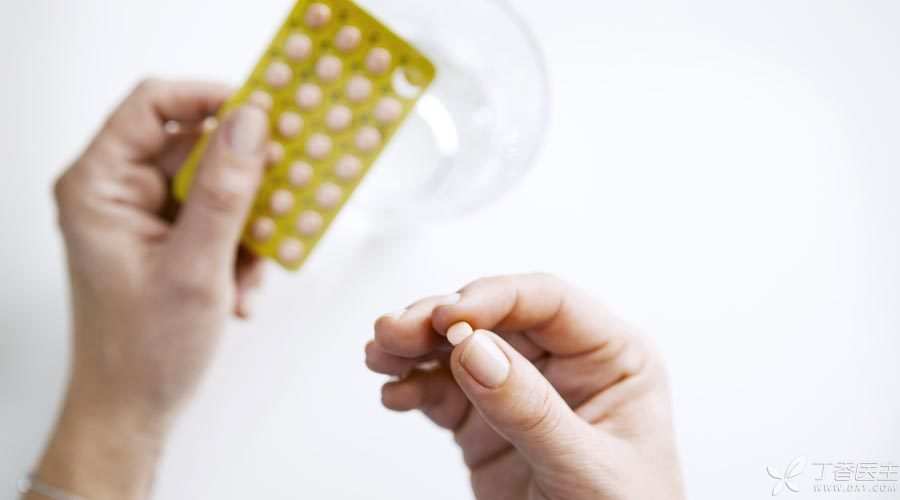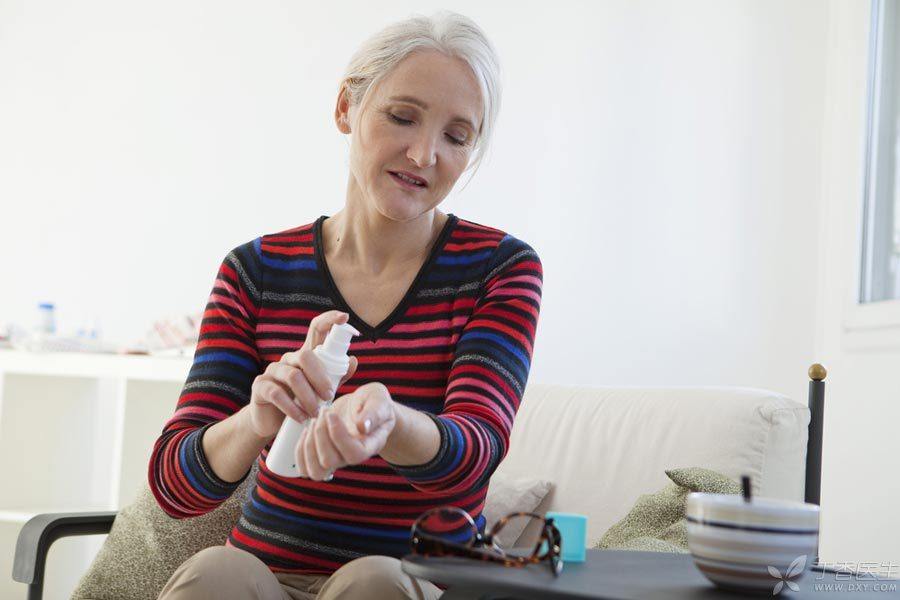
Dr. Clove often receives questions from readers. In the comment area of the [Menopause Series] article, readers and friends have expressed their confusion about menopause.
In this article, Dr. Clove sorted out the most frequently asked questions and answered them in a unified way to see if there was exactly what you wanted to know.
How do you judge whether you are entering menopause?
For women over 40 years of age, within 10 months, there are two changes in the length of adjacent menstrual cycles that are greater than or equal to 7 days, which means that they have entered the early menopause. The sign of entering the late menopause transition is the length of the menstrual cycle, which is more than twice the original normal cycle.
Is soybean isoflavone and other health products useful for improving climacteric symptoms?
Soybean isoflavone health products are not recommended. Soybean isoflavone is extracted from soybean, the actual effect is not clear, and further research is still needed.
What is even more worrying is that Some merchants may, in order to [effectively], And in health care products mixed with hormone ingredients, this will actually lead to problems. Because, in the plan formulated by doctors, the supplementary dose and plan are very clear, and there are monitoring measures, can control the risk to the lowest. However, if health care products contain hormones, the specific dose has become an uncontrollable factor, which is difficult to grasp, but will increase the risk.
Therefore, health headlines do not recommend taking health care products to [recuperate]. If hormone therapy is considered, it is recommended to go to a regular hospital for examination, conduct it under the guidance of a doctor, and accept strict follow-up and monitoring.

Heard that bean products have hormone-like effects?
The estrogen-like effect of bean products is due to the inclusion of [soybean isoflavone].
In fact, soybean isoflavone can combine with estrogen receptor in human body, but its activity is only equivalent to 1/100 ~ 1/1000 of human estrogen. Its effect in human body needs further research, and there is no obvious effect as hormone replacement therapy. However, the online statement that [bean products can lead to breast cancer] is also groundless.
However, bean products themselves are very good food.
< < Dietary Guidelines for Chinese Residents > > It is recommended to eat 30-50g of soybeans every day. Under normal circumstances, if 50g of dried beans are converted into soybean products, it is about 200g of tofu, which is about half a box of boxed tofu. Or 800 milliliters, that is, about 4 cups of soya-bean milk. It is safe and reasonable to eat soya-bean products according to this amount.
Is everyone suitable for hormone replacement therapy?
Although hormone replacement therapy is effective, it is not applicable to everyone. Women should not use hormone replacement therapy in any of the following situations:
- Being pregnant or suspected of being pregnant; Vaginal bleeding of unknown cause; Breast cancer or suspected breast cancer; Malignant tumors with sex hormone dependence; In the past 6 months, he has suffered from arteriovenous thromboembolic diseases. Severe liver and kidney dysfunction; Suffering from meningioma (progesterone cannot be used); Hematoporphyria, otosclerosis, or other conditions that doctors think are not suitable for hormone replacement therapy.

Will hormone replacement therapy lead to obesity?
The hormones in [hormones cause obesity] refer to glucocorticoid drugs. Long-term use of these hormones will increase appetite and redistribute body fat, resulting in side effects such as facial swelling and abdominal obesity.
But hormone replacement therapy uses estrogen and progesterone. These two hormones are sex hormones, which can help maintain women’s physiological function and relieve climacteric symptoms.
Choosing the right combination of estrogen and progesterone can actually avoid weight gain and even lose weight.
I am nearly 60 years old, can I have hormone replacement therapy?
The best period for hormone replacement therapy is generally before the age of 60 or within 10 years after menopause. If the body has adapted to irrigation without estrogen after the age of 60 or after a long period of menopause, the adverse reactions and risks will increase accordingly due to sudden supplement.
Is it true that hormone drugs must not be used after the age of 60? It is not absolute either. For example, if there are only symptoms of vaginal dryness and itching, ointment can still be used locally under the guidance of a doctor.
If you still feel climacteric symptoms after the age of 60, consult a professional doctor first. Combined with age, symptoms, examination results, etc., the doctor will conduct risk benefit assessment and make a judgment on whether hormone replacement therapy is suitable.
How long will hormone replacement therapy last?
The relevant guidelines do not set a time limit for the use of hormone replacement therapy. As long as it can safely relieve menopause-related symptoms and improve the quality of life, it can be used continuously.
For women younger than 60 years old or within 10 years of menopause, the benefits of treatment are greatest.
Whether women over 60 years old should continue treatment should be considered from the overall risk and benefit analysis. This task should be entrusted to a reliable doctor.
If contraindications occur during hormone replacement therapy, the drug should be stopped immediately.
Can hormone replacement therapy lead to breast cancer?
Hormone replacement therapy will not significantly increase the risk of breast cancer in the future for 5 years. After 5 years of treatment, the risk is uncertain, but even if the risk increases, it is very small.
During treatment, different kinds and different ways of administration of estrogen and progesterone may have different effects on the risk of breast cancer.
Therefore, it is emphasized that after hormone replacement therapy is started, follow-up can be carried out within 1-3 months, follow-up interval can be 3-6 months, and follow-up interval after 1 year can be 6-12 months.
If there is abnormal vaginal bleeding or other adverse reactions, you should return to the clinic at any time.
Can hormone replacement therapy lead to stroke and myocardial infarction?
For women younger than 60 years old, without cardiovascular diseases and with menopause-related symptoms, hormone replacement therapy can reduce the incidence and mortality of cardiovascular diseases as soon as possible during perimenopause.
For the use of hormone replacement therapy among elderly women, especially those over 60 years old, it is necessary to analyze the advantages and disadvantages and decide not to recommend hormone replacement therapy only for the prevention of coronary heart disease, etc.

Heard that hormone replacement therapy can lead to senile dementia?
Starting estrogen application in near menopause and early menopause will reduce the risk of cognitive decline or dementia in women.
However, hormone replacement therapy for the first time only 10 years after menopause or 60 years old may indeed increase the risk of Alzheimer’s disease and cannot improve the existing decline in cognitive function.
This is also why we have been stressing the need for doctors to guide treatment.
I have hysteromyoma (hyperplasia of mammary glands, endometriosis, diabetes, gallbladder diseases), can I still use hormone replacement therapy?
Hysteromyoma
Menopausal women with hysteromyoma are not absolute contraindications to hormone therapy, but are within the scope of caution.
The vast majority of women who use hormone therapy will not cause new uterine fibroids, and small doses of hormone therapy will not promote the growth of uterine fibroids. However, several points should be noted:
1. Hormone therapy for submucosal leiomyoma of uterus is easy to cause abnormal uterine bleeding. Therefore, hormone therapy is not recommended. However, the growth of subserosal or intermuscular leiomyoma has no obvious correlation with hormone replacement therapy.
2. Transdermal administration of estrogen is more likely to lead to changes in uterine leiomyoma than oral administration, while oral administration of large dose and small dose of progesterone is more likely to lead to changes in uterine leiomyoma.
In general, the rational use of hormones under the guidance of doctors will not stimulate the growth of endometrium and hysteromyoma and is safe.
Hyperplasia of mammary glands
It is not a contraindication to hormone replacement therapy. Low-dose hormone replacement therapy is safe, but the possibility of breast cancer should be ruled out and should be used under the guidance of doctors and followed up regularly.
Endometriosis
Appropriate dose of hormone replacement therapy is also safe and effective for patients with endometriosis.
Diabetes mellitus
Under the guidance of doctors, estrogen ointment alone or transdermal administration combined with natural progesterone can improve perimenopausal symptoms and play a synergistic role in controlling blood sugar.
Gallbladder disease
Percutaneous hormone replacement therapy is recommended. Hormones pass through the skin, through fat and finally into the blood, which does not affect the gallbladder or increase the burden on the gallbladder.
